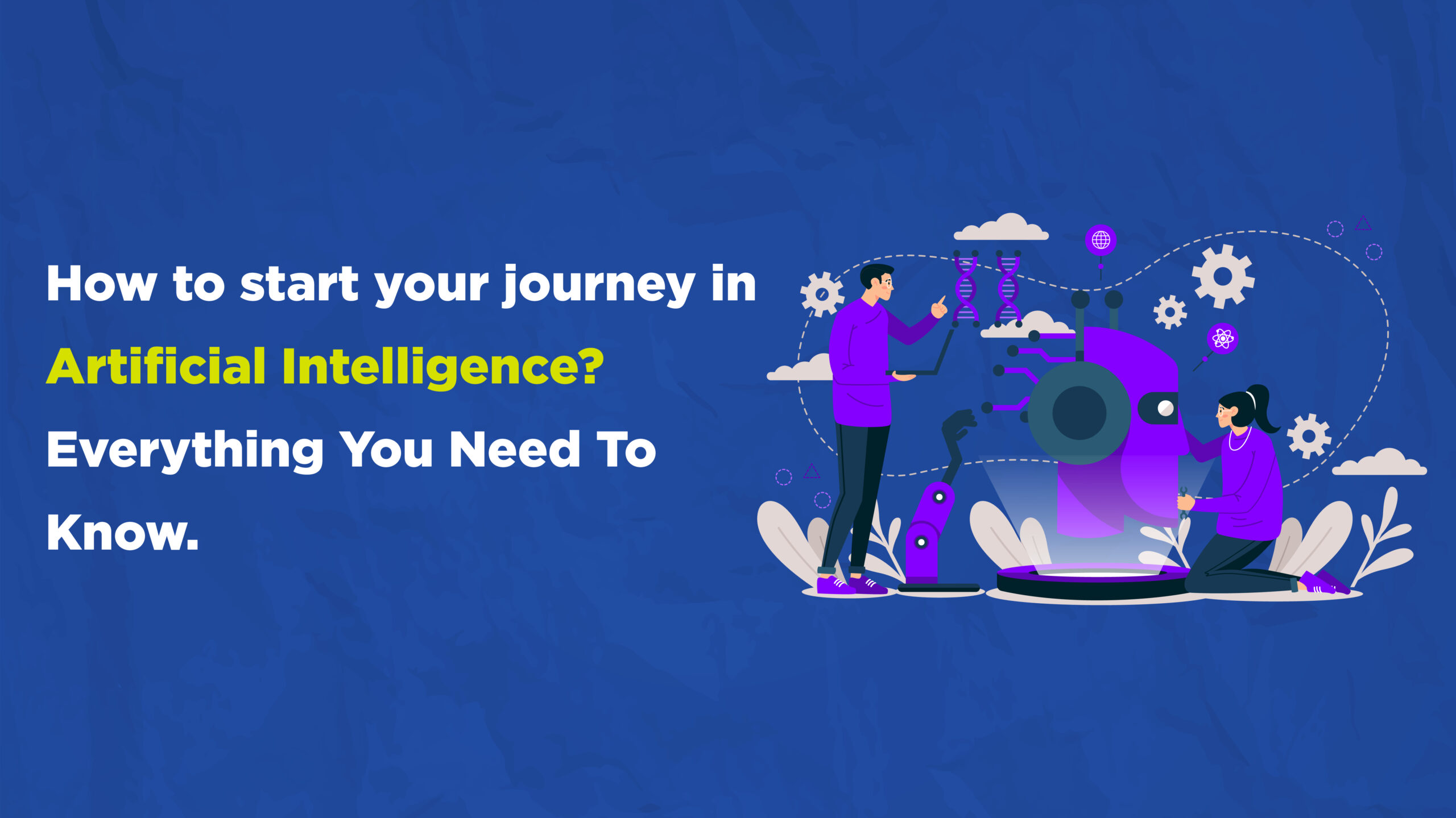Forget about those robots taking over the world in movies! Artificial intelligence (AI) is here to lend us a hand, not replace us. It’s already making our lives easier, from suggesting shows you’ll love to answering your questions online. And the best part? If you’re curious about how to jump into this exciting field, there are tons of opportunities!
This comprehensive guide, crafted with the wisdom of a seasoned Artificial Intelligence expert (over a decade of experience!), will equip you with the knowledge and steps to become an AI developer. But remember the journey to AI mastery requires dedication and a love for learning.
Step 1: Building a Strong Foundation
- Mathematics: Imagine data as Legos – linear algebra helps you see how the pieces fit together. You can then use this knowledge to build and adjust different structures, which are like your machine learning models. Calculus is like a supercharger, helping you fine-tune these models to work at their best. Statistics and probability come in handy to analyze your Lego creations – were you able to build something cool? Did it hold together well? These tools let you understand how well your Artificial Intelligence is performing.
- Free Online Resources: Don’t let the math intimidate you! Engaging platforms like Skolar offer fantastic courses on these subjects. Start with the fundamentals and gradually build your confidence.
Step 2: Mastering the Language of Machines
- Python: Your go-to programming language for AI development. Renowned for its readability and a vast collection of Artificial Intelligence-focused libraries like TensorFlow, sci-kit-learn, and PyTorch.
- Learning Path: Begin with the basics – syntax, data structures, and control flow. These form the building blocks of any programming language. Once comfortable, delve into object-oriented programming (OOP) concepts and explore the aforementioned libraries.
- Interactive Platforms: Put your learning into practice with Google Colab (https://colab.research.google.com/) or Kaggle Kernels (https://www.kaggle.com/code), which offer free cloud-based environments to write and execute Python code.
Step 3: Demystifying the Data Dimension
- Data Wrangling: Data is the fuel for Artificial Intelligence. In this crucial step, you’ll learn how to clean, organize, and manipulate raw data using powerful Python libraries like pandas (for data analysis) and NumPy (for numerical computations).
- Data Visualization: Libraries like Matplotlib and Seaborn (Python) help you create insightful charts and graphs to uncover hidden patterns within your data. These visualizations are essential for understanding the data your AI models will learn from.
- Online Courses: Platforms like Skolar (https://www.skolar.in/course/ai-with-deep-learning) offer comprehensive courses specifically on data manipulation and analysis for Artificial Intelligence applications.
Step 4: The Artificial Intelligence Arsenal
- Machine Learning (ML): A core concept in AI, ML algorithms empower computers to learn from data without explicit programming. There are three main categories:
- Supervised Learning: Here, the data is labeled (think “cat” or “dog” for image data). The ML algorithm learns from these labels to make predictions on new, unseen data.
- Unsupervised Learning: In contrast, unsupervised learning deals with unlabeled data. The algorithm identifies patterns and relationships within the data itself, useful for tasks like customer segmentation or anomaly detection.
- Reinforcement Learning: Inspired by how we learn through trial and error, reinforcement learning models interact with an environment, and receive rewards for desired actions and penalties for mistakes. This allows them to learn optimal strategies over time.
- Deep Learning: A subfield of ML inspired by the structure and function of the human brain. Deep learning models, like artificial neural networks, excel at complex tasks like image recognition, natural language processing (understanding human language), and even game playing!
Step 5: Building Your Artificial Intelligence Masterpiece
- Identify a Problem: The world is brimming with opportunities for Artificial Intelligence. AI’s got superpowers for making a positive impact! Imagine doctors with digital helpers for repetitive tasks, freeing them for more patients. In finance, Artificial Intelligence can streamline processes, saving you time and money. Even the environment can benefit from AI’s smarts, helping us tackle complex challenges. Pretty cool, right?
- Open-source Datasets: There’s no need to start from scratch! Explore platforms like Kaggle (https://www.kaggle.com/) and the UCI Machine Learning Repository (https://archive.ics.uci.edu/) for a vast collection of datasets relevant to various domains. These datasets will provide the training data your AI model needs to learn.
- Machine Learning Frameworks: Leverage frameworks like TensorFlow (https://www.tensorflow.org/) or PyTorch (https://pytorch.org/) to build and train your AI models efficiently. Imagine these tools as pre-made building blocks, like Legos! They have special pieces like CNNs that are great at recognizing things in images, and RNNs that can understand the flow of language. This lets you snap together solutions without needing to build every single piece from scratch, so you can concentrate on the main problem you’re trying to crack.
Step 6: The Never-ending Quest for Knowledge
The world of AI is constantly evolving. Here’s how to stay ahead of the curve:
- Stay Updated: Follow prominent AI blogs like Machine Learning Mastery (https://machinelearningmastery.com/) and The Gradient (https://gradient.pub/) for the latest advancements, research, and industry trends.
- Research Papers: Dive deeper by subscribing to research paper repositories like arXiv (https://arxiv.org/). Here, you’ll find cutting-edge research on various AI subfields, directly from the minds shaping the future.
- Online Communities: Connect with other AI enthusiasts and developers! Join forums like Reddit’s r/MachineLearning (https://www.reddit.com/r/MachineLearning/) or Facebook groups dedicated to AI. This is a place to share your cool projects, ask questions that have stumped you, and learn from the experiences of other AI enthusiasts.
Beyond the Steps: Essential Skills for the AI Journey
- Problem-solving: AI development is all about tackling complex challenges. Hone your analytical thinking and problem-solving skills to approach problems from different angles and identify the most effective AI solution.
- Critical Thinking: Don’t just accept things at face value. Develop your critical thinking skills to evaluate research papers, new technologies, and the results your AI models produce.
- Creativity: AI is a vast and ever-evolving field. When it comes to tackling problems, don’t be afraid to come up with fresh ideas that break the mold.
- Communication: As an Artificial Intelligence developer, you’ll need to explain complex technical concepts to both technical and non-technical audiences. Clear and concise communication is key.
The Final Spark: Ignite Your Potential
Learning to be an AI developer is an awesome adventure! It’s tough sometimes, but you’ll learn a ton and have those incredible “aha!” moments that make it all worth it. So buckle up and embrace the challenges – they’ll turn you into a rockstar AI developer. With dedication, this guide as your roadmap, and a sprinkle of SEO magic, you’ll be well on your way to becoming an Artificial Intelligence extraordinaire, ready to shape the future with your innovative creations. So, what are you waiting for? Take the first step today and ignite your potential in the captivating world of Artificial Intelligence!

